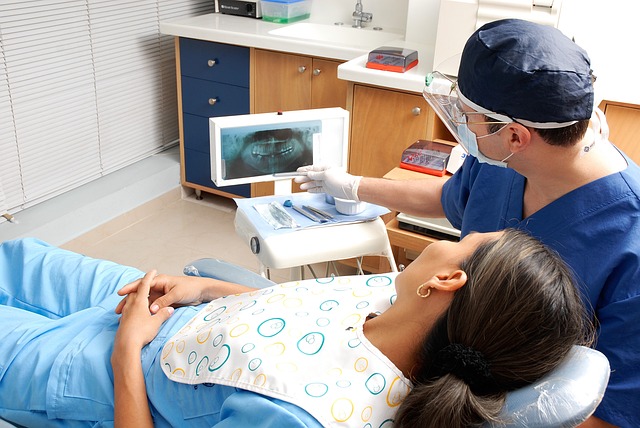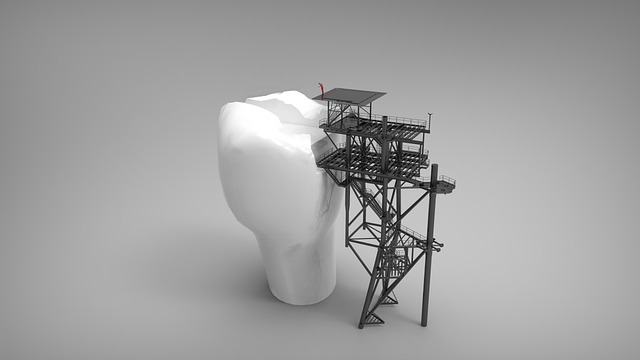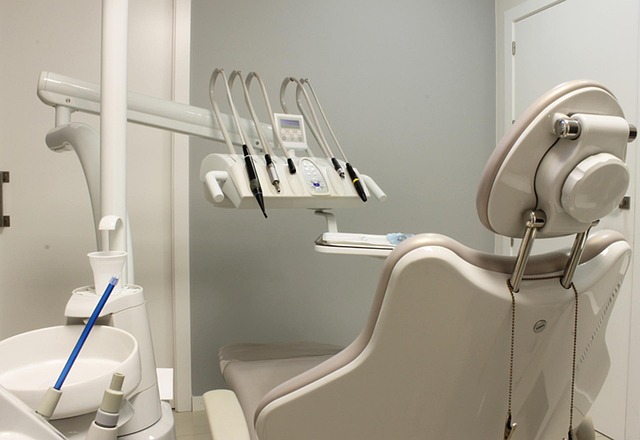Dentists require adequate dentist liability coverage to protect against financial losses and legal repercussions from medical malpractice claims. This includes general and professional liability insurance for accidents, errors, and negligence during dental procedures. Proper record-keeping, safety protocols, staff training, and continuing education reduce risks, while consulting experts aids in selecting optimal dentist liability coverage. Comprehensive protection ensures patient safety and safeguards against significant legal consequences.
In the dynamic field of dentistry, ensuring comprehensive dentist liability coverage is paramount to safeguard your practice and personal assets. This article serves as a guide through the intricate landscape of dental malpractice insurance, empowering practitioners with essential knowledge. From comprehending basic liability coverage to exploring real-life scenarios, we unravel common claims and offer strategies for avoidance. Additionally, we navigate legal requirements, best practices, and the process of selecting the ideal insurance plan tailored to your dental practice’s unique needs.
- Understanding Dentist Liability Coverage: Basics Unveiled
- Common Dental Malpractice Claims and How to Avoid Them
- Choosing the Right Insurance Plan for Your Practice
- Key Components of a Comprehensive Dental Malpractice Policy
- Case Studies: Real-Life Examples of Dental Malpractice Scenarios
- Navigating Legal Requirements and Industry Best Practices
Understanding Dentist Liability Coverage: Basics Unveiled

Dentists, like any healthcare professionals, face unique risks and potential liabilities in their practice. Understanding dentist liability coverage is crucial to protecting against financial losses and legal repercussions stemming from medical malpractice. This type of insurance offers financial protection against claims of negligence, such as incorrect diagnoses, improper treatments, or injuries caused by equipment malfunctions.
The basics of dentist liability coverage involve several key components. It typically includes general liability insurance, which covers ordinary accidents and damages, along with professional liability insurance specifically tailored for dental malpractice. This latter component pays for legal fees and settlement costs if a patient sues the dentist for alleged missteps or errors during treatment. By carrying adequate dentist liability coverage, dentists can safeguard their assets, maintain practice continuity, and ensure peace of mind knowing they have financial protection in case of unforeseen legal issues.
Common Dental Malpractice Claims and How to Avoid Them

Common Dental Malpractice Claims and Prevention Strategies
Some of the most prevalent dental malpractice claims include issues related to improper diagnoses, inadequate treatment planning, and errors during procedures. Patients often sue when they experience pain, suffering, or permanent damage due to these mistakes. For instance, misdiagnosing a tooth infection as a simple cavity or performing extractions without exploring conservative treatments can lead to legal repercussions. Dentists can mitigate such risks by staying current with the latest research and techniques, maintaining thorough patient records, and communicating openly with patients about treatment options.
To avoid malpractice claims, dentists should implement robust safety protocols, ensure informed consent through clear explanations, and obtain necessary permissions for procedures. Regular staff training on infection control and sterile practices is essential. Additionally, staying up-to-date with continuing education courses focused on patient safety can enhance dentist liability coverage and reduce the chances of errors that may result in costly lawsuits.
Choosing the Right Insurance Plan for Your Practice

Selecting the appropriate insurance plan is a critical step for dentists looking to safeguard their practice and patients from potential malpractice claims. The right coverage should offer comprehensive protection against various risks specific to dental care, such as negligence, errors, or omissions during procedures. Dentist liability coverage typically includes professional liability insurance, which covers damages due to medical malpractice, along with general liability insurance to protect against non-medical claims like property damage or personal injury on the practice premises.
When evaluating options, consider factors like the type and complexity of dental services provided, the size and location of your practice, as well as state-specific requirements for dentist liability coverage. It’s essential to analyze different policies’ limitations, deductibles, and exclusions to ensure they align with your practice’s unique needs. Consulting with insurance experts or professional organizations dedicated to dentistry can offer valuable insights in this process, helping dentists make informed decisions to mitigate risks effectively.
Key Components of a Comprehensive Dental Malpractice Policy

When crafting a comprehensive dental malpractice policy, several key components ensure that dentists are adequately protected against potential liabilities. First and foremost, it’s crucial to have general liability coverage that shields against claims of bodily injury or property damage occurring during dental procedures. This includes accidents, slip-and-falls in the office, or even errors in treatment that lead to adverse outcomes.
In addition to general liability, specific coverage for professional services is essential. This protects dentists from malpractice suits arising from negligence in diagnosis, treatment planning, or execution of dental work. Specific policies should also include coverage for dental errors, such as incorrect tooth extractions, misaligned fillings, or implant failures, which can result in significant patient harm and legal repercussions.
Case Studies: Real-Life Examples of Dental Malpractice Scenarios

In the realm of dentistry, where precision and care are paramount, understanding dentist liability coverage is crucial. Case studies offer a glimpse into real-life scenarios that underscore the importance of adequate malpractice insurance. For instance, consider a case where a dentist fails to diagnose an oral cancer in its early stages, leading to delayed treatment and potential patient harm. Such incidents can result in significant legal repercussions, highlighting the need for comprehensive dental liability coverage.
Another example involves a procedural error during a routine tooth extraction, causing unnecessary pain and damage to surrounding teeth or jawbones. These cases serve as reminders that even seemingly minor lapses in judgment or technique can lead to malpractice claims. By ensuring adequate dentist liability coverage, professionals can protect themselves from financial burdens and focus on delivering the best possible care to their patients.
Navigating Legal Requirements and Industry Best Practices

Dentists, like all healthcare professionals, must navigate a complex web of legal requirements and industry best practices when it comes to malpractice coverage. This includes staying up-to-date with local regulations and understanding the specific risks associated with dental procedures. Adequate dentist liability coverage is essential to protect against potential claims arising from negligence or medical errors.
Industry best practices emphasize not only carrying sufficient insurance but also maintaining thorough records, adhering to safety protocols, and continuously updating knowledge through professional development. By combining robust malpractice coverage with these proactive measures, dentists can mitigate risks and ensure they provide the highest standard of care to their patients.
